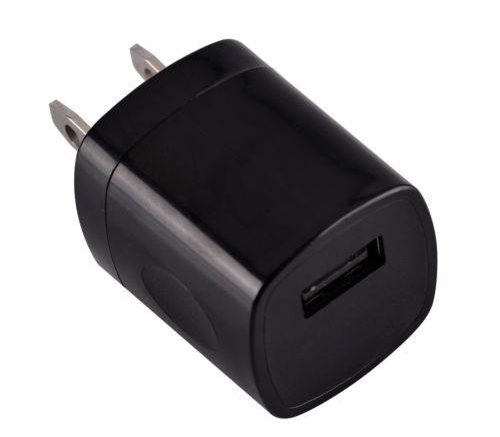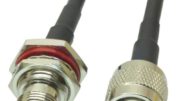At this point you probably have a dozen little USB chargers. They’ve been coming with all sorts of accessories for about a decade. I just looked in my junk box and found an astounding 13 of them. But are they all equal?
Learn to read the (tiny) writing
Every power supply used in the US has information on it to show what it’s capable of. Generally, you will find two pieces of information:
- Input voltage, frequency, and amperage. Usually this is 110 volts at 60 hertz, and the amount of amperage may vary.
- Output voltage and amperage. There is no frequency since the adapter outputs direct current.
Let’s take a bit more of a look here.
Input voltage
Input voltage is either going to be about 110 volts or 100-240 volts. If there is a range, this indicates the same power supply can be used in other countries. Usually you don’t care about that. Voltage is abbreviated as V, so it might say 110V.
Output voltage
In almost every case, the output voltage of a USB charger is 5 volts. If it’s not 5 volts then this charger probably shouldn’t be used for most devices.
Input frequency
The US uses alternating current at 60 hertz. Your charger may say 50-60 hertz, or it may abbreviate hertz as ~. If there is a range, again this charger can be used overseas but you probably don’t care.
Input amperage
Amperage is listed as the maximum amount that the device will pull. A properly designed device won’t pull more amps than it needs. In the case of small chargers, usually less than one amp is needed so the draw is measured in milliamps, abbreviated mA. Not all chargers show input amperage.
Output amperage
Again, this is measured in milliamps and is a measure of the maximum power the adapter can put out upon request. There are four common amperages:
- 250mA which is sufficient to charge phones very slowly but may not be sufficient to power other devices
- 500mA which is sufficient to charge phones at “standard” rate
- 1000mA (also listed as 1A) which is sufficient to charge phones at a faster rate, usually not the fastest rate.
- 2100mA (also listed as 2.1A) which is sufficient to charge tablets and charge phones at the fastest rate you can get without using USB-C
Keep in mind that these are the maximums, not what is continuously supplied. If your device only needs 300mA it will pull 300mA even if the charger is capable of supplying 2100mA.
What about watts?
Watts are a more compact measure of current that combines volts and amps. In fact to get watts you multiply volts x amps. Example, a 5 volt, 500mA (.5A) power supply is supplying 2.5 watts. If you see the current listed as watts, you can generally figure out the amps because you know that every USB charger runs at 5 volts unless listed otherwise. So divide the number of watts by 5 to get the number of amps.
How can I figure out what my device needs?
Generally the owner’s manual will tell you how much current the device needs in order to work properly. If it doesn’t, you can check the manufacturer’s web site or support forums.
What happens if you use the wrong power adapter?
Using a power adapter that supplies too much voltage will usually cause stress on the device and may break it or even cause it to catch fire. However, using a power adapter that potentially supplies too much amperage usually won’t do much because the device will pull only what it needs.
However, supplying too little voltage or amperage can also cause problems. If the device attempts to pull too many volts or amps it could cause the power adapter to short out. That’s dangerous. In a best case scenario your device just won’t work.





